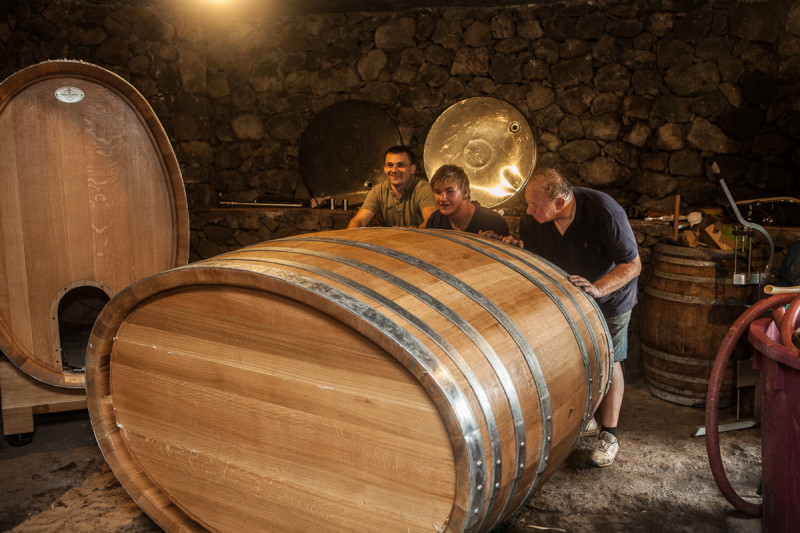Rebirth of a Botte
What do you do when you’ve commissioned several botti from one of the top wine barrel makers in the world, but the casks are too large to fit through the door of your wine cellar? This is a question Anna Martens and Eric Narioo of Vino di Anna had to wrestle with in the fall, shortly after their harvest. Aside from beginning the season of wine making, they were also finishing a cellar room renovation, adding two massive qveries, and the new stone building inside which the qveries were buried.
Normally the esteemed Austrian builder, Klaus Pauscha and his team make their custom wine barrels to order and ship them completed to clients all over the world. Vino di Anna’s project was a bit different, so Pauscha agreed to visit the vineyard first and come up with a solution.
The Pauscha Cooperage was founded in 1875 by Klaus’ great grandfather in Slovenia. After the war in Slovenia, the family fled and relocated to Austria. Their fine wine barrel making business was passed down through the generations and in 1990 Klaus Pauscha took the helm of the company. Pauscha barrels are entirely handcrafted with wood selected by Klaus himself from old oak forests in France, Croatia, Romania and Hungary. Respected around the world for his craft, you will find Pauscha’s handmade botti, barriques and fermentation stands in cellars from Austria to Italy, France, Germany, South Africa, Portugal and Spain.
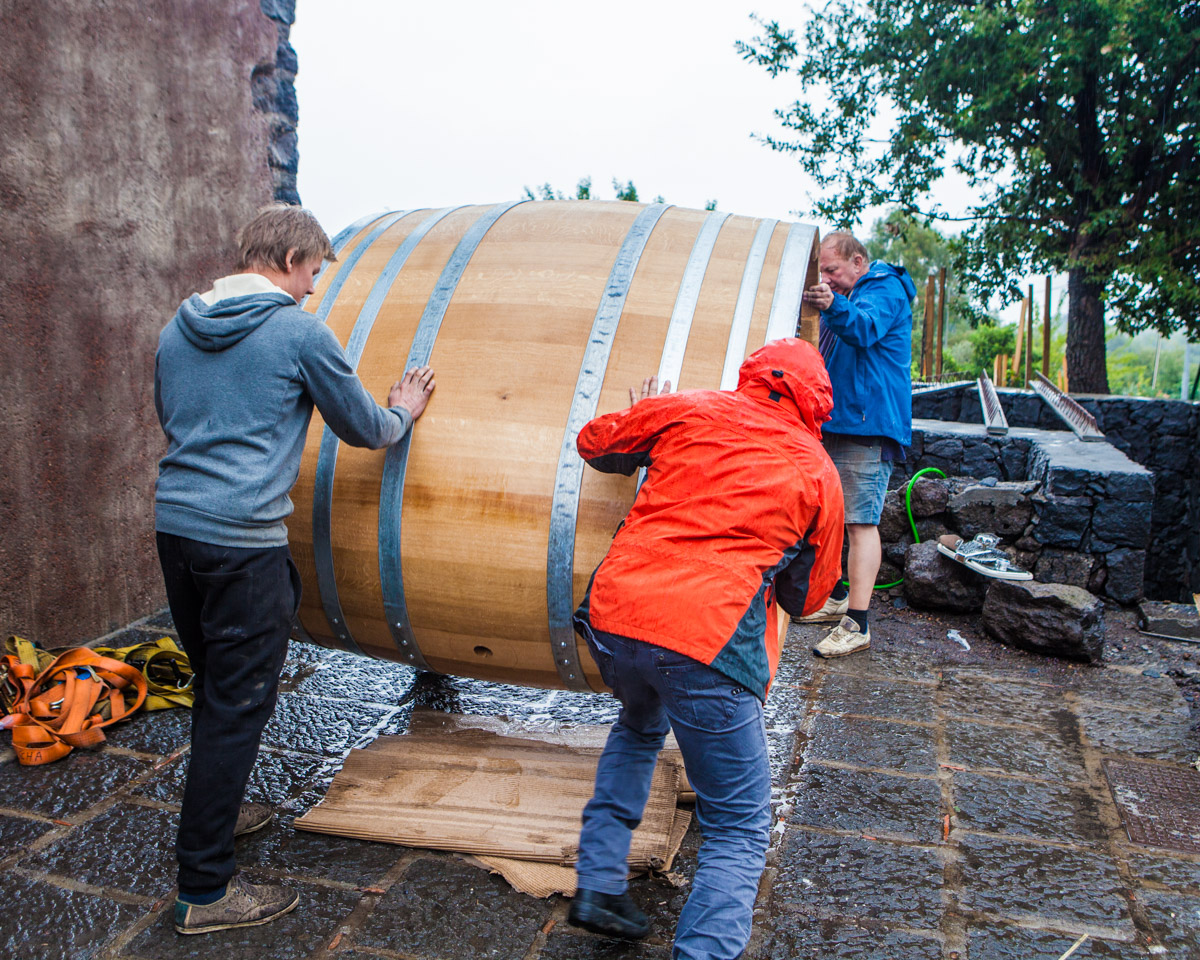
On the day Pauscha arrived at Vino di Anna, along with his son and an assistant, a cool drizzle was falling on the vineyard in Solichiatta. If you’re familiar with the narrow, windy, rural roads of Sicily you can imagine that getting an eight wheel truck into the property on a rainy day was a feat unto itself. After some artful maneuvering, the truck was backed up to the cellar room door and the first of the beautiful botte was lifted to the ground. This is where the solution to Anna and Eric’s narrow door began.
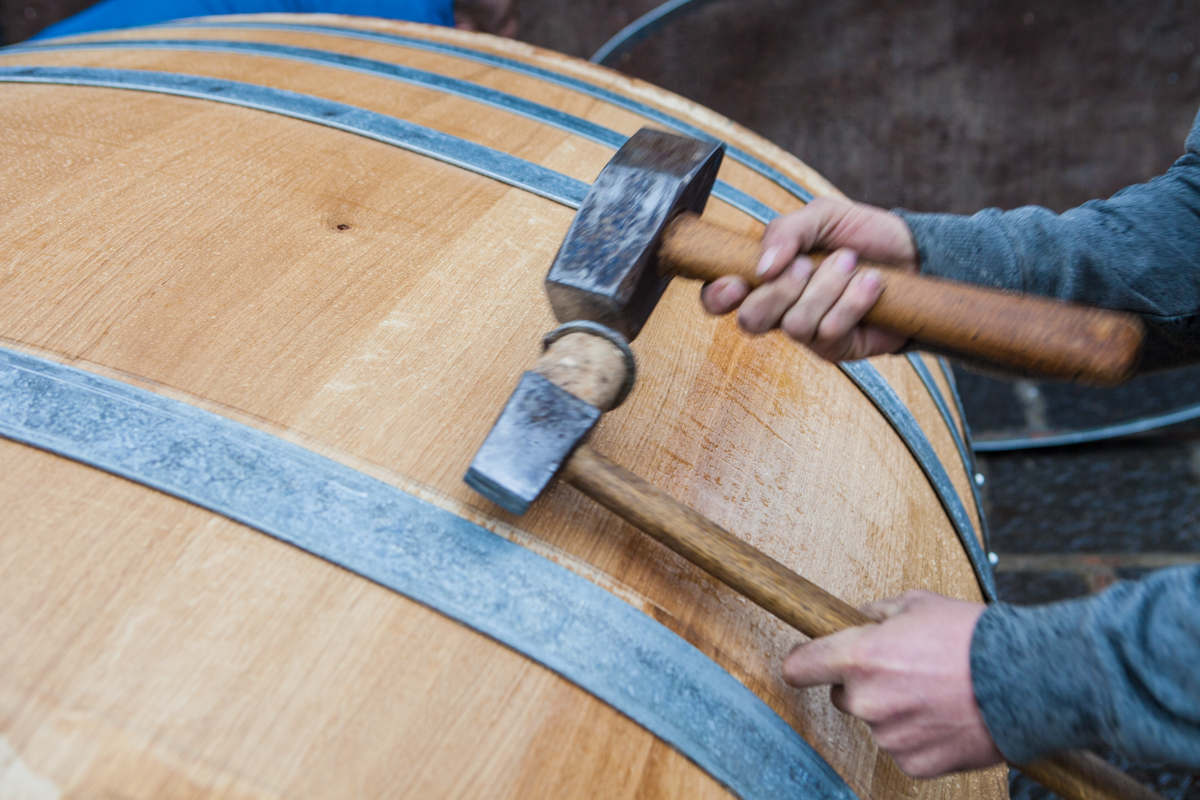

Klaus and his son proceeded to expertly wield their heavy mallets to remove the steel rings around the botte. Ring by ring, board by perfectly shaped board, they deconstructed the barrel and carried each piece through the door, past the fermentation tanks, down around the qveries, to the back of the long stone cellar room. Then the reconstruction began – a fascinating process much like building a small ship. Each piece of shaped wood had been numbered for it’s position and then fit back together like a puzzle. They rubbed wax and placed strips of reeds between certain boards as they slowly pounded the steel rings back around the barrel until the seams were perfectly tight and smooth. The room was dark and cool and as I watched Klaus and his son work for several hours, matching the pieces, swinging their mallets, running their fingers over every joint; it was like witnessing an avant guard percussion symphony. When you swing a big mallet into a piece of steel attached to a wood barrel in a stone cellar, let me tell you – the sound rings out like a gong. And if you have the thick, strong arms of what look something like an Austrian lumberjack, it’s impressive.
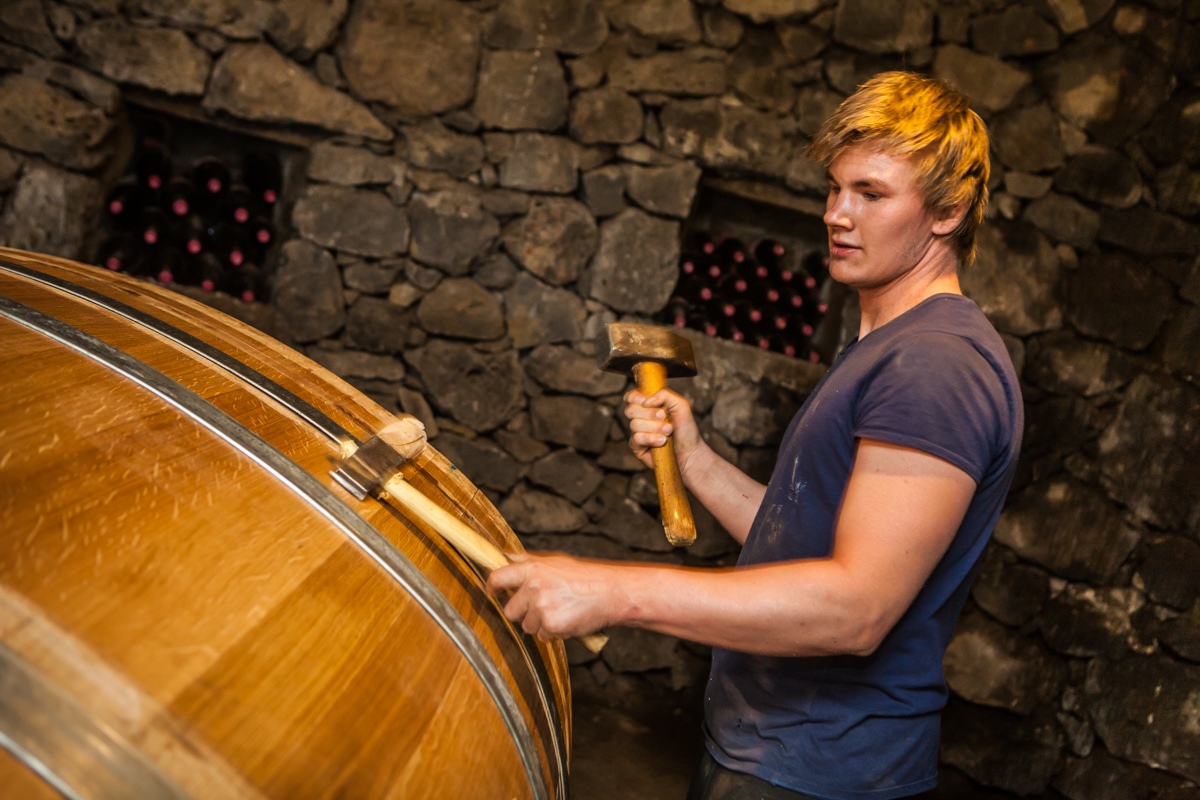
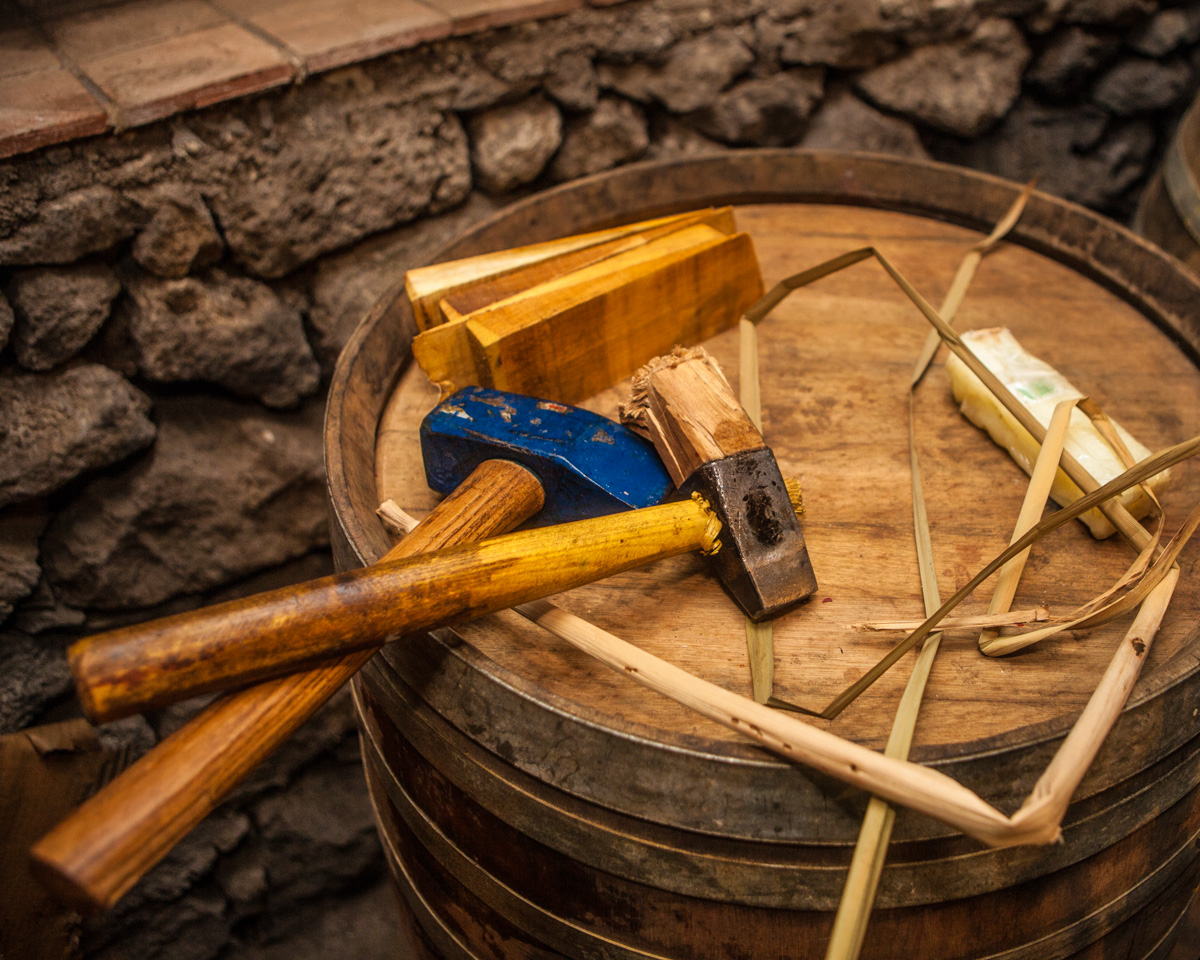

Anna and Eric also had friends, Michelle and John, visiting who had been pitching in for the week of harvest. It was a fascinating mix of language, sounds and culture in the cellar that afternoon – Michelle from Canada, John from England, Anna from Australia, Eric from France, Jay and I from the United States, Valerio and Tonnino (Vino di Anna’s team) from Sicily, Klaus and his son from Austria. Along with the sharp percussion of steel, wood and stone echoing from the botte construction, conversations were flowing between English (with Australian, British and American accents), Italian, German, and French.
Once completed, Klaus and his team had to lift the botte onto it’s wooden support into the back corner of the cellar. The three men heaved, rolled and balanced, slowly maneuvering the massive, heavy barrel into position. After the first barrel was finally in place, Anna prepared lunch for the everyone on the terrace – local cheeses, proscuitto, tomato salad, olives, fresh bread, lasagna, and of course a taste of Vino di Anna’s delicious wines. Half way through lunch, what started as a few light sprinkles threatened to become a downpour so everyone quickly grabbed plates from the table and we moved inside to the kitchen until it was time to get to back to the second botte.

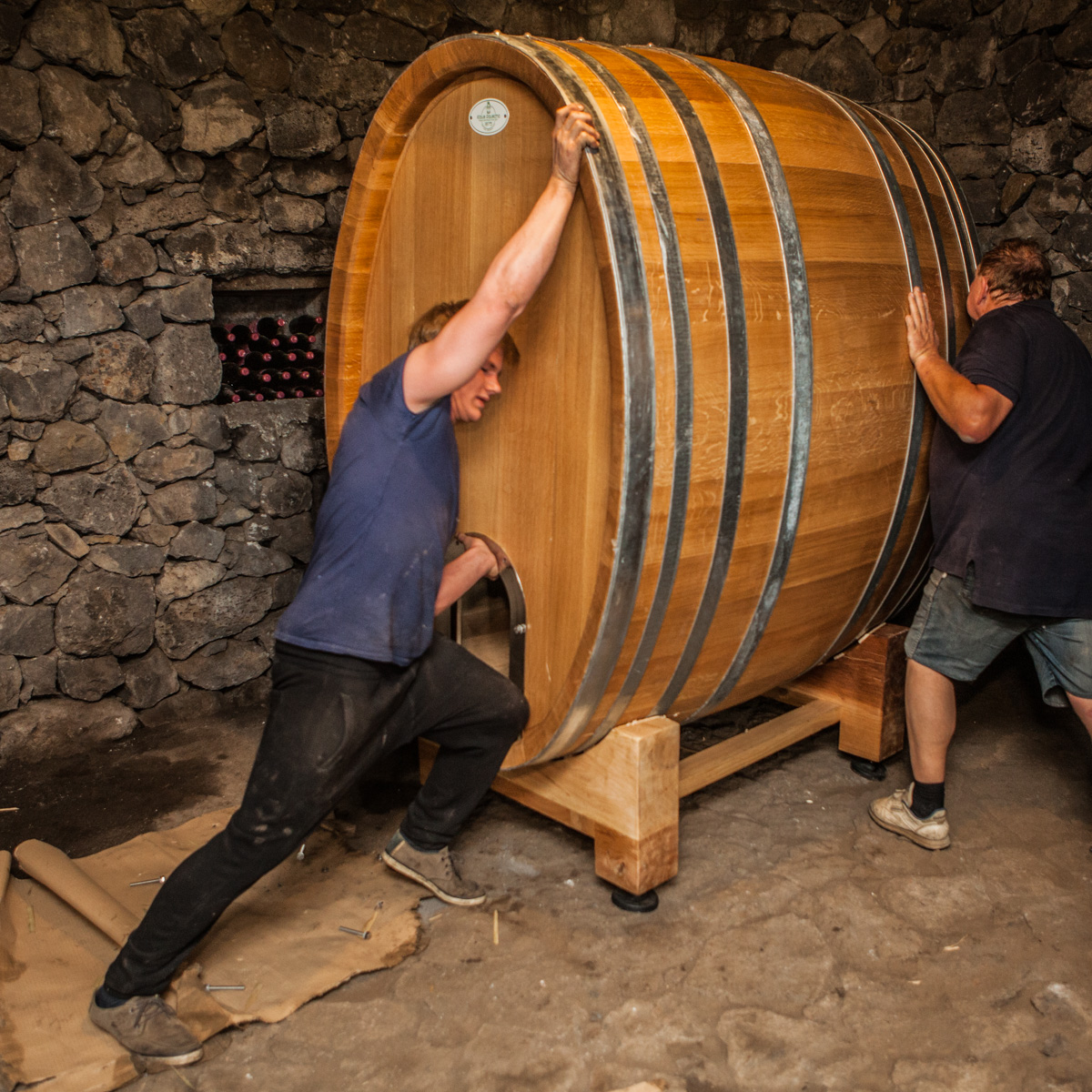

Klaus and his son grabbed their mallets and began the deconstruction process outside as the rain continued to fall, once again taking apart the puzzle of the barrel and moving it piece by piece through the narrow door. And so, the percussion symphony continued for several more hours until the two beautiful new botti rested in their new home, waiting to be filled with the season’s harvest of grapes. Anna and Eric have a way of taking what many say is a “difficult grape”, nerello mascalese, and creating incredibly fresh, delicate, aromatic wines. Fermenting their harvest in Klaus Pauscha’s botti will be a new adventure for Vino di Anna. After watching the artistry of this process, I can only imagine Pauscha barrels and Vino di Anna will be a fine collaboration.

